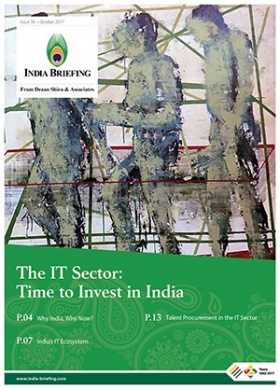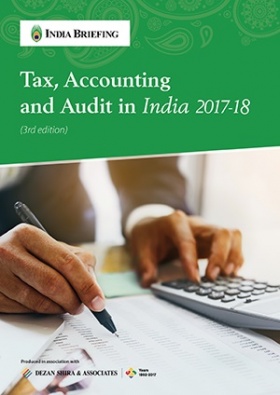Business in India under the New Tax Regime
By Vikas Srivastava
Nov. 2 – The new tax rules and regulations which are under construction once approved by the Indian government will transform the way you do business in India. The Indian government envisages three major changes under Indian taxing system.
First, introduction of goods and services tax (GST) which will engulf all kind of indirect taxes levied by the central and the state government like excise duty and value-added tax, entry tax and inter-state tax at the state level respectively.
The tax aims to treat India as uniform market for the purpose of taxation of Goods and Services by implementing a single indirect tax rate. The proposed GST will only be levied when goods are sold and services are provided at a rate of 16 to 18 percent which is comparatively lower than the earlier indirect tax rate of 35 to 40 percent levied on majority of goods. It is also proposed that no GST will be levied on those goods which fall under the “exempted” category.
The lower rate of indirect tax provided by GST indicates the increase in the demand for goods in Indian market which will generate revenues and profits for the companies and push the country’s economy in upward direction. Also, the distortion in the price of the goods will be eliminated and will be available at uniform price across the country. On the other hand corporations be benefited by reduction in their working capital as and less documentation for tax filing. In short, doing business in India will be comparatively less taxing on the implementation of GST from April 1, 2010.
Second, the new tax will adhere to the International Financial Reporting System (IFRS), a globally recognized system for accounting and financial reporting which is expected to be more transparent as compared to the Indian generally accepted accounting standard. Approximately 100 countries across the globe have adopted this system. India is anticipated to bring it into force from April 1, 2011 which also means the accounting of companies for year 2010-11 should be in line with IFRS norms and regulations for the accounting year 2010-11. It is anticipated that the implementation of IFRS could bring distortion in income and profits which might subsequently lead to change in earnings and financial ratios of companies. Experts and critics of IFRS also opine that there could be greater volatility in income and profits across quarters as IFRS emphasis on “fair value” which means every transaction or entry in the account books should be mark-to-market.
Another major change brought in by IFRS is the concept of “control” of a company over its subsidiaries and associated companies. As per the Indian GAAP, control is linked with the majority ownership i.e. voting rights. The new definition of “control” provided by experts on IFRS however, means the power to direct activities of an entity to generate returns for the reporting entity. Also after the implementation of IFRS, companies cannot siphon off its profit under the umbrella of associated companies or subsidiaries losing money since IFRS intends to increase the boundaries of a company to include associated companies apart from its subsidiaries. Under IFRS rules companies either listed or unlisted on stock exchanges will have to consolidate accounts not only for their subsidiaries but also of their associated companies and vendors which are under their control.
Third, a direct tax code (DTC) is another big idea of the Indian government to reduce tax burden and also to eliminate exemptions and incentives. The code seems to be promising one and supposed to be enforced from April 1, 2011. The major proposal under the code includes reduction in corporate income tax from 34 percent (inclusive of surcharge and cess) to 25 percent (inclusive of surcharge and cess) for domestic companies. Companies can carry forward losses for an unlimited period of time. The new tax code also provides for change in the basis of “minimum alternate tax” (MAT). Earlier MAT was implemented at a rate of 15 percent of the book profit but under the new code MAT will be charged at a rate of 2 percent of the gross assets for non banking companies and 0.25 percent of gross assets in case of banking companies. However, on the other hand the new tax code intends to put an end to all location based incentives like tax holidays for a company established under special economic zone. The elimination of tax incentives provided under SEZs is based on the rationale that these kinds of incentives create economic distortions and allocate or divert resources to areas without any competitive edge or advantages. Experts after analyzing the new tax code are of the opinion that once the code is implemented, companies in India will have to pay more taxes, the new MAT structure and rate will kill new asset heavy business and also the business location for a start-up company will depend on the economics and on the incentive based location. The new code also intends to bring under its scanner are mergers and acquisitions, pricing in transactions related to vendors or group companies and cross border transactions.
The implementation of GST, IFRS and DTC is expected to provide a homogeneous and favorable market for doing business in India in terms of taxation which hopefully will attract more foreign companies to invest in Indian market.
Vikas Srivastava is a legal associate of foreign direct investment at the Mumbai, India office of Dezan Shira & Associates. For more inquiries, email mumbai@dezshira.com.
- Previous Article India’s Finance Minister Asked to Explain Retrospective Tax Demands
- Next Article Indian M&A and PE Financing on the Up








